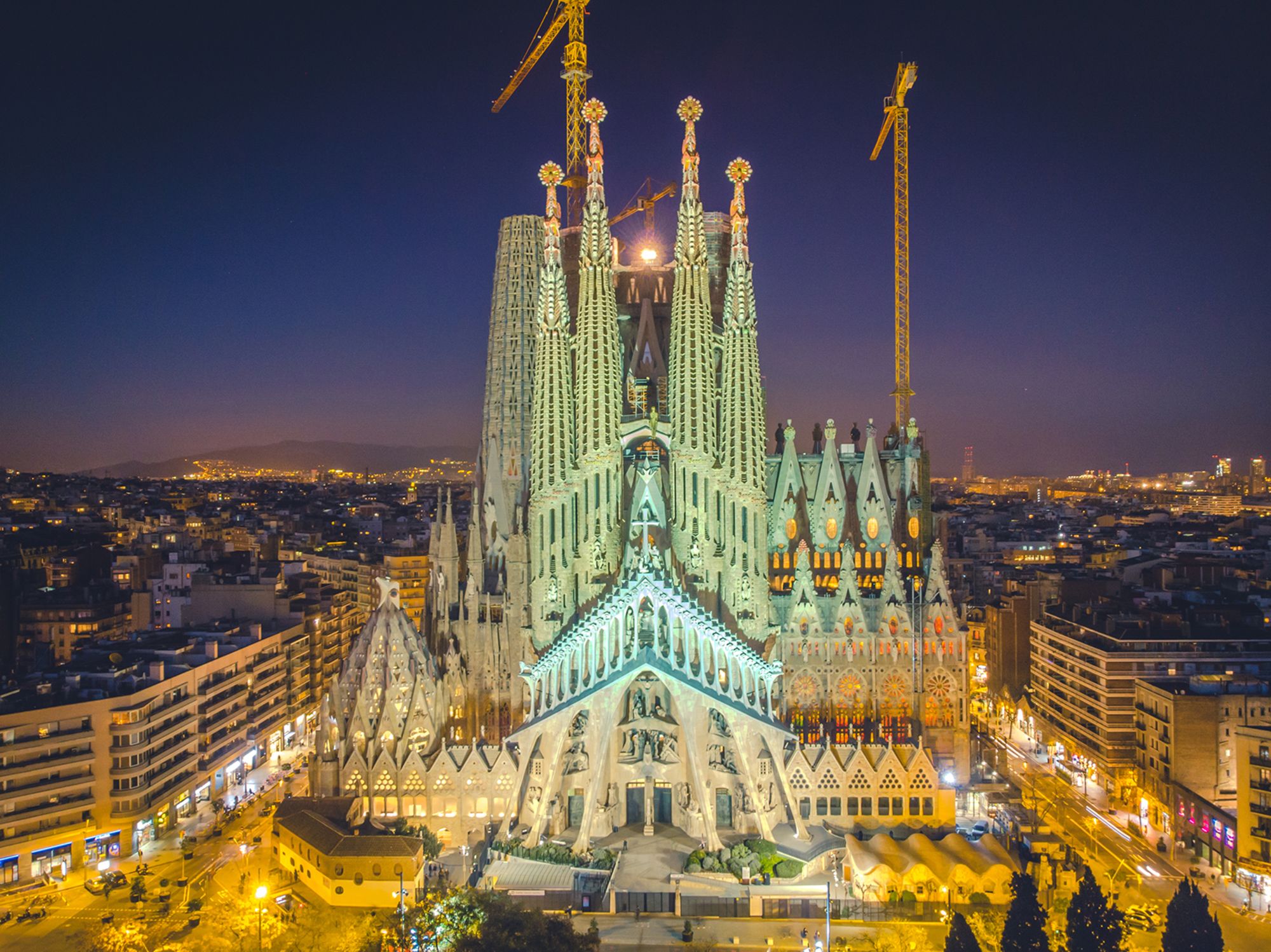Editor’s Note: Mark Foster Gage is an American architect and founder of Mark Foster Gage Architects in New York. He is also a professor of architecture at Yale University School of Architecture.
Barcelona’s most famous landmark has all the makings of a fantastic blockbuster movie: politically savvy priests, robots, vigilante revolutionaries, the husband of the Virgin Mary, a seemingly mad but brilliant architect, vandals, desecrators, and 138 years of a still-unfolding plot.
The Basilica de la Sagrada Família is, by a rather large margin, among the world’s most complicated and time-consuming architectural projects ever undertaken – still under construction over the heads of four million annual visitors. While technically a basilica (as it does not have a sitting bishop), somehow even the word cathedral seems too miniscule to fully describe the overwhelming scale and complexity of both this massive building and the geological timescales of its construction.
A family affair
The idea for the building began in 1882 when a small group of Catholic devotees of the Saint Joseph (the husband of the Virgin Mary) known as the Josephites, dedicated to encouraging family cohesion in the face of the emerging industrial revolution, sought to build a small parish church on the outskirts of then suburban Barcelona. In order to promote this familial focus, the church was to be dedicated to the holy family itself, and thus was eventually named the Basilica de la Sagrada Família, the Church of the Holy Family.
What the Josephites could not have known was that their modest project, in the hands of an ambitious young Catalan architect, Antoni Gaudí, whose only built projects at that time consisted of a gazebo, some furniture, a kiosk and set of lamp posts, would balloon into one of the most ambitious, visionary, unusual, and long-lived architectural projects in the history of humanity – currently clocking in at 138 years of construction, which, for comparison, is over six times as long as it took to build the Great Pyramid of Giza in Egypt. And it’s still not finished.
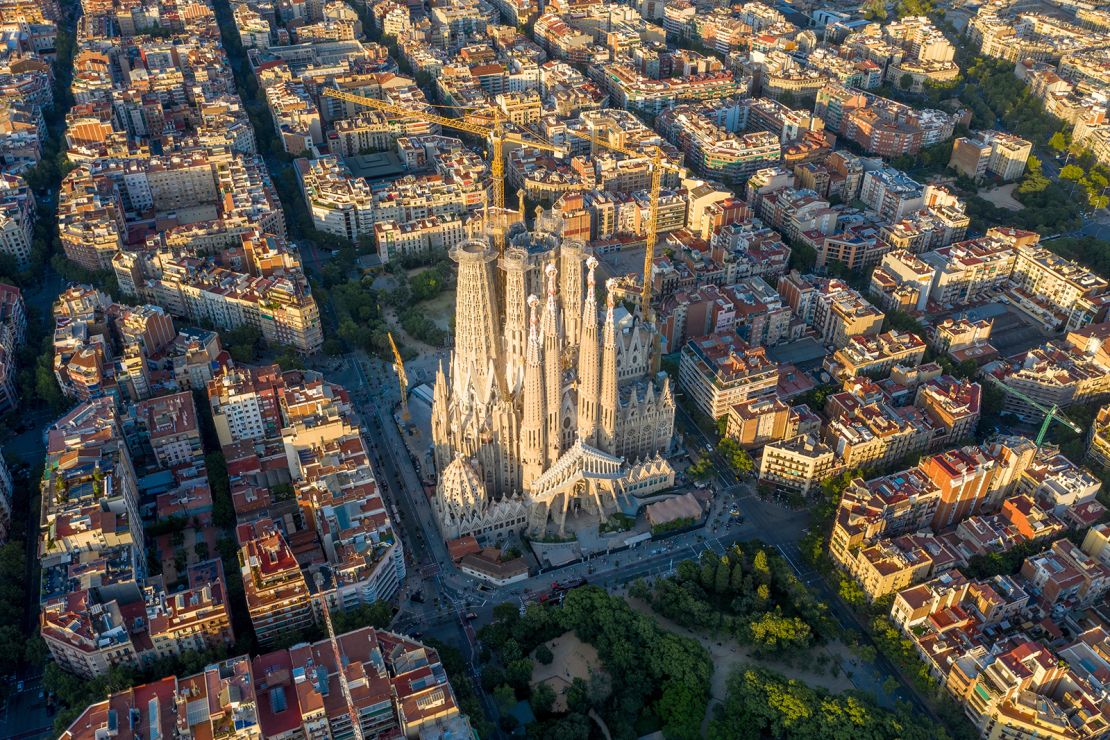
A century of struggle
If 2020 attests to the fact that much can go wrong in a single year, the Sagrada Família attests to what can go wrong over the course of a century. Its architect, Gaudí, while brilliant beyond his time, was not exactly speedy, nor efficient – taking nearly seven years to develop the first set of sketches that visually described parts of the building to the client. It wasn’t until 1906 – over two decades into the project – that its first set of design sketches, done by his assistant Juan Rubió, depicting the majority of the design was complete, and the first physical architectural model of the whole basilica, which had to be 3D printed by a computer because it was so detailed, wasn’t finished until 2012 – nearly 129 years after the project began. (As a practicing architect I am positively salivating at the billable hours…)
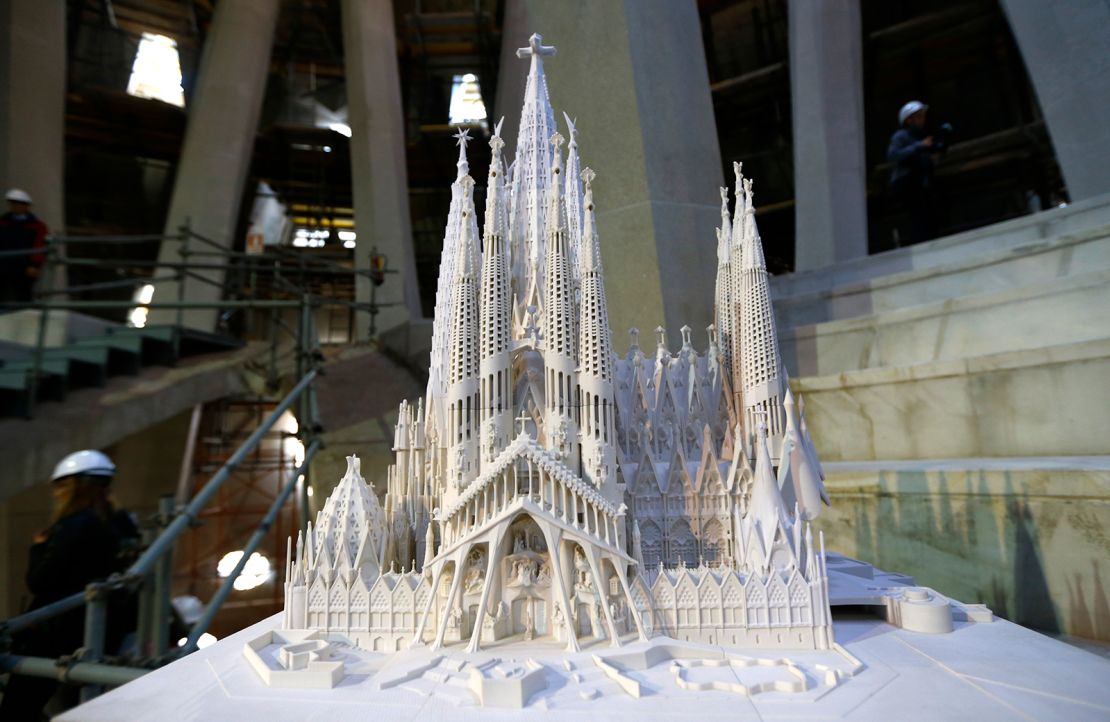
Gaudí’s vision was of church was so complex and detailed from the start that at no point could it be physically drawn by hand using the typical scale drawings so common to almost all architectural projects. Instead, it was almost entirely constructed through the making of large plaster models to communicate Gaudí’s desires to the army of stonemasons slowly liberating its form from blocks of local Montjuïc sandstone.
The interior structure, comprised of what appear to be stone trees and branches that soar vertically and explode into massive intersecting vaults, was so complicated that it could only be visualized, and structurally calculated, by suspending a 13-foot-tall drooping web of interconnected chains and weights from the ceiling of Gaudí’s workshop. Gaudi developed this technique while working on a study for the Colònia Güell Chapel (a smaller, unfinished landmark on the outskirts of Barcelona) and scaled the research up for use on the Sagrada Familia.
Built to last: Europe's beautiful cathedrals
This produced an upside-down network of catenary arches (arch shapes formed by hanging chains) that would support the buildings gravitational thrust without the need for thick stone piers or the flying buttresses so normally associated with more traditional Gothic cathedrals. Not only was this process excruciatingly slow, but also expensive, and most importantly – undocumented – residing significantly in the mind and imagination of Gaudí himself. This would prove problematic.

For the later part of the 43 years he spent working on the project Gaudí, continually dedicated to a life of celibacy despite having no formal religious position, humbly lived in a small, disheveled room on the construction site itself. In 1926, at age 74, the famous master-architect was killed in a freak tram accident. Dressed so poorly, and with only raisins and almonds found in his pocket, Gaudí was mistaken for a pauper. Having not been given proper treatment he died several days thereafter.
By the time of Gaudí’s tragic death, only an estimated 10-15% of the project had been built. A single facade neared completion, and actual finished work included one transept, a crypt, and some of the apse wall – but none of the main interior had even been started. Fortunately for his team of sculptors, stonemasons, architects and artisans, Gaudí did leave behind rolls of sketches, photographs and a large collection of plaster models, some at massive scales that were a tenth of their actual built size, that would guide their construction efforts for the following decade. But this help was short lived.
A huge rotting tooth
On July 17, 1936, ten years after Gaudí’s death, the Spanish Civil War erupted and within days a group of revolutionaries had set fire to Gaudí’s workshop, burning the remaining drawings, and smashing the remaining plaster models. In doing so they nearly obliterated the already precious few remaining documents that described Gaudí’s ultimate vision.
The vigilantes, however, did not stop there, shortly thereafter descending into the crypt and desecrating the tombs within, including Gaudí’s. In the following years all of the metal from railings, religious details and other areas of the building site had been scrapped to make ammunition, leaving only a stone hulk with, as Gaudí’s biographer Gijs Van Hensbergen notes, “…the crypt below ground transformed into makeshift toilets, with Gaudí’s grave defiled as a dump for used sardine cans, broken bottles and other rubbish.”
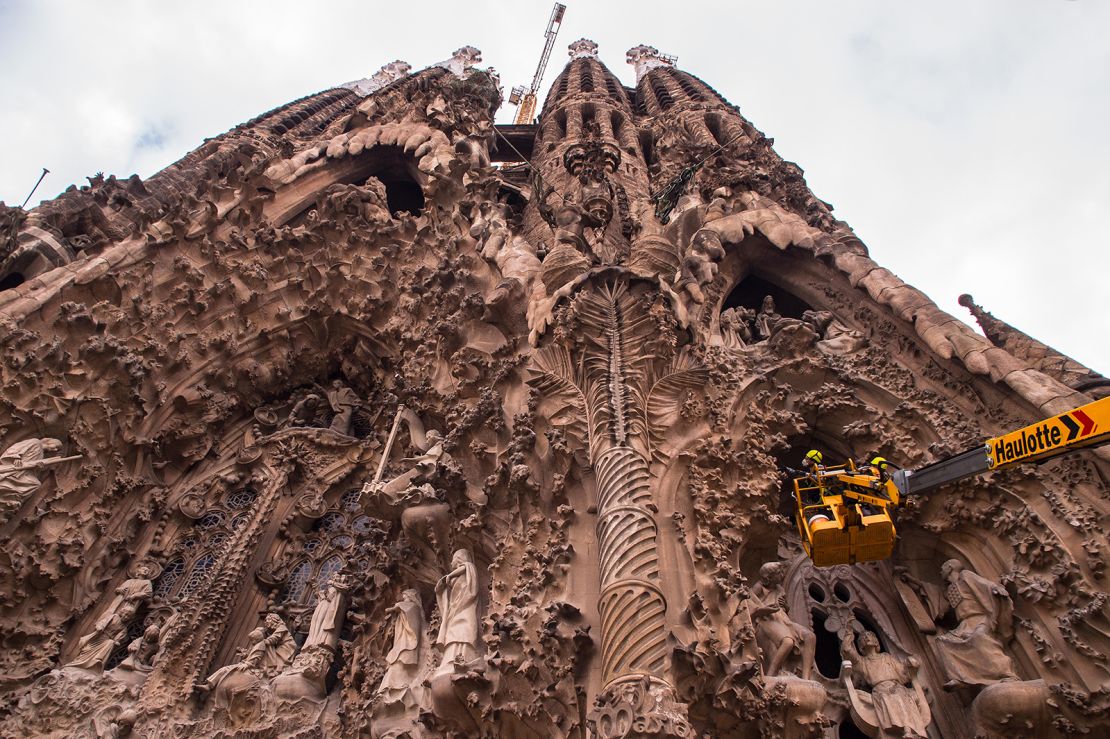
Through the next four decades, construction limped along precariously in fits and starts, interrupted by recessions, World War II, and multiple political revolutions that rocked Spain through periods of fascism, monarchy, and eventually into democracy. Even after nearly a full century of construction, by 1978 there remained numerous aspects of the project that had still never been designed, and even more that nobody knew how to build. There were, however, no shortage of ideas about what to do, including one from the famous surrealist painter Salvador Dali who noted “It would be a betrayal to even think of finishing the Sagrada Família … Let it remain there, like a huge rotting tooth.”
The next generation
Help arrived in 1979 in the unassuming form of a 22-year-old graduate student from New Zealand, Mark Burry, who was studying at Cambridge and visited the Sagrada Família as part of his final University project. When interviewing two of the octogenarian former apprentices of Gaudí, Burry asked about how progress happened with so little documentation. As he describes, “Their answer was to point me to boxes and boxes of model fragments with the suggestion that all the secrets lay within.” His curiosity eventually prompted an offer – to join their team as an intern.
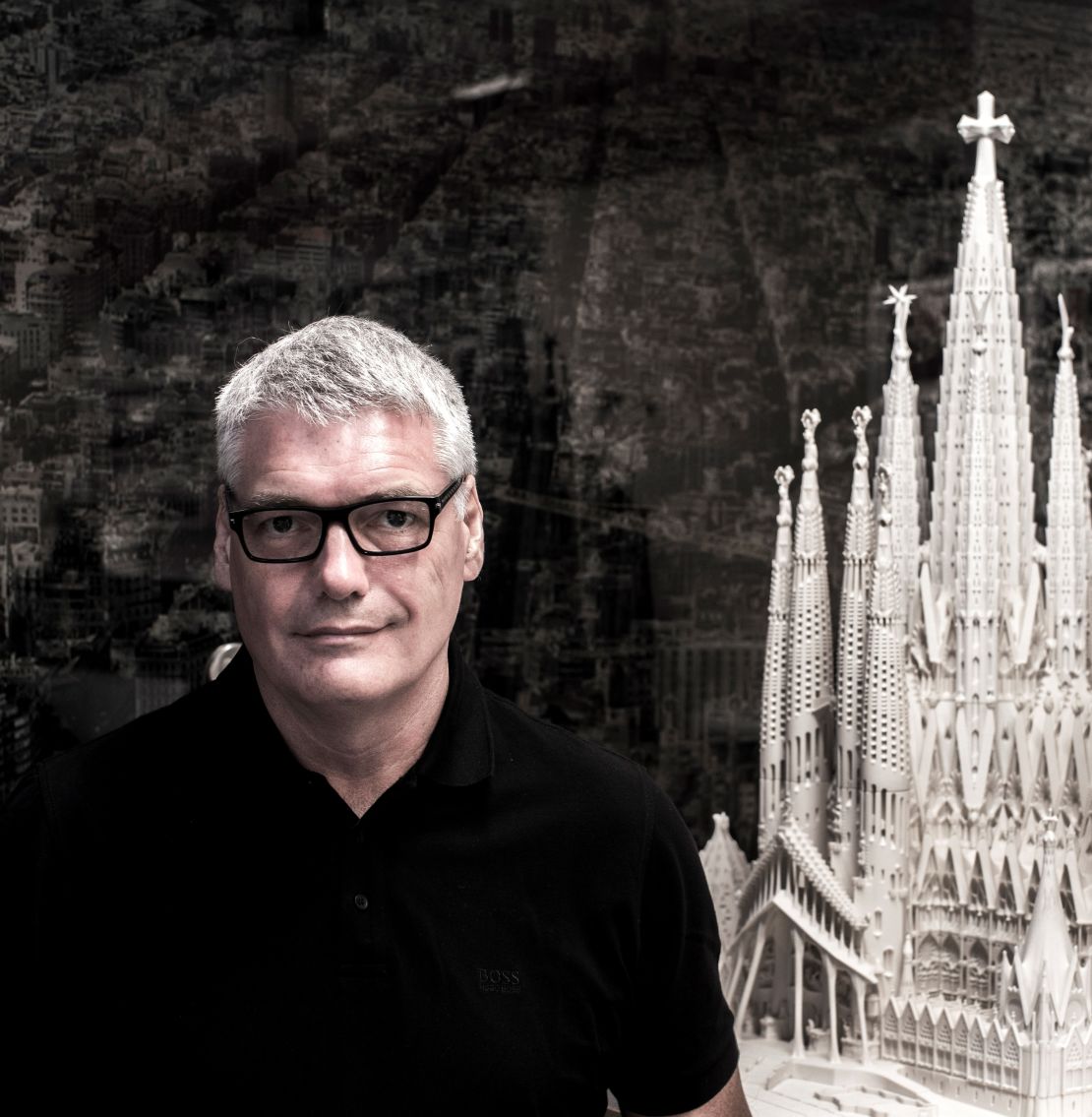
From that moment on Burry would dedicate a significant part of his life to solving the unanswered artistic, mathematical, geometric and structural problems that plagued the completion efforts. Burry notes in an article, regarding Gaudí, that “He wrote nothing at all about his architectural theory in a career spanning 48 years. In order to gain insights into one of the most creative and technically competent architects ever, we have to unravel the mysteries of his work itself, which sets us all a number of significant challenges.”
One of the main challenges was to figure out the hidden language of complex geometries that resided only in Gaudí’s mind, in order to develop a more rigorous system through which the remainder of the project could be both designed and constructed.
While originally hand-drawing the complex intersection of weird shapes, including things like conoids and hyperbolic paraboloids, Burry realized as early as 1979 that the only tool that could possibly calculate, in a reasonable amount of time, the structures, forms, and shapes needed to solve the remaining mysteries of the Sagrada Família was one relatively new to the consumer world: the computer.
Setting broken bones
Computer technology would provide the magic key to success for many aspects of the building, including the design of a series of incredibly complicated bone-like columns on the Western “passion” facade, that were torqued and twisted in Gaudí’s loose charcoal sketches – designed as they were to convey the pain of the crucifixion of Jesus to which the facade was dedicated. Gaudí spoke hauntingly about this facade, and referred to it at times as the “death facade,” describing that it would be “hard, flayed, as if made of bones.” After seventeen years of artists and sculptors trying to translate Gaudí’s sketch of these bone-like columns into actual 3D form, they had, in Burry’s words, “gotten nowhere.”
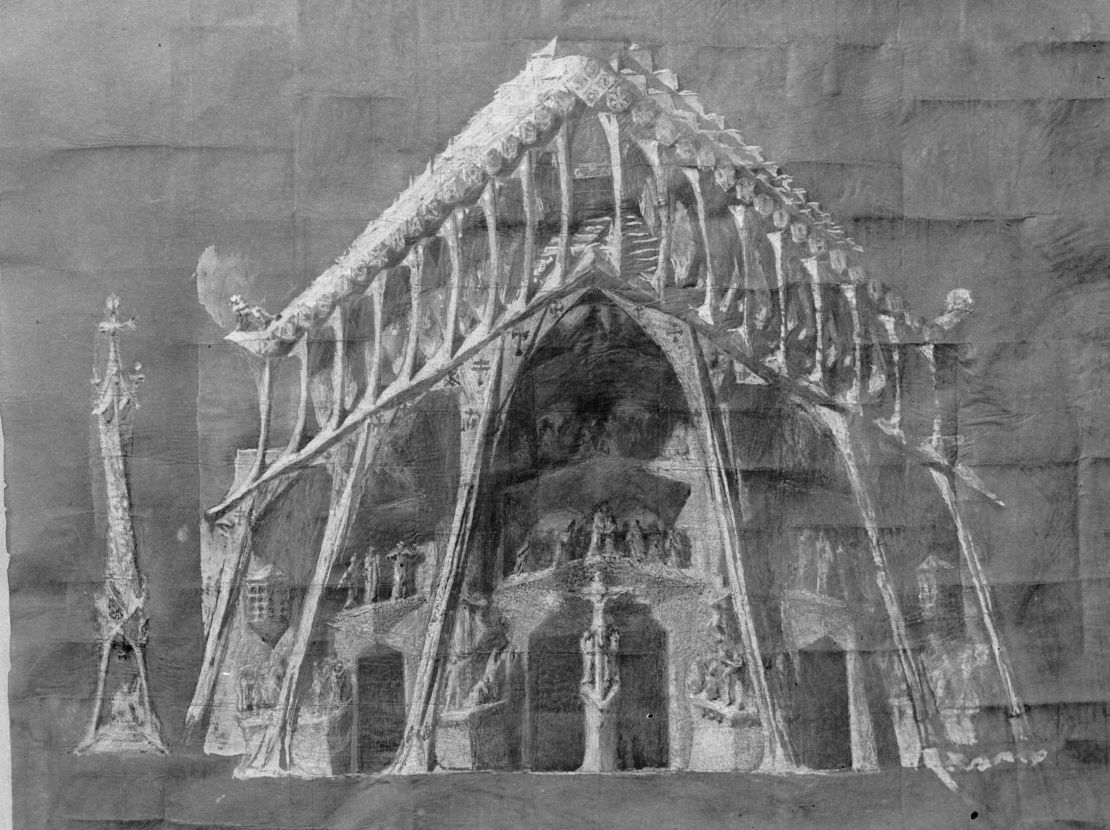
By eventually using software used to design airplanes, Burry was able to develop, with his partner Jane Burry, a mathematical system that not only exactly matched the forms that Gaudí had already built, but could predict, using the same complex geometric language, how Gaudí would likely have developed other parts of the church, including the tortured columns in question. Burry described to me that that particular colonnade of columns was so complicated, even in the computer, that, “the whole façade is parametrically one entity, the test for that is you cannot change one dimension without it having a ripple on effect through the whole construction.” In short, a single wrong dimension could unravel the entire solution.
Design solutions were underway but one crucial problem remained, however: How to actually build everything.
Nearing completion. Maybe.
Fortunately for Burry and the extended team, computers at that time were just starting to be linked with other new technologies, ones that could build things in the real, physical, world – namely, robotics. Of particular use to the Sagrada Família was the emergence CNC (computer numerically controlled) milling machines that could carve stone. The first, very primitive, version of which of which the Sagrada Família team purchased from Van Voorden, a Dutch company, in July 1988.
While robotic machines are in wide use today in the manufacture of everything from automobiles to leather jackets, they were nearly non-existent in 1988. The first robotically carved piece of stone for the building was machined in November 1989 and installed the following year.
And so it came to be that Burry’s work in using the computer to calculate the complex forms, combined with the use of robotic tools to cut and carve stone, led to what may be one of the greatest irony’s in the history of architecture – that one of its least efficient and most time-consuming building projects, ever, would become a pioneering site for construction innovation using avant-garde robotic technologies.
Regarding the carving of stone by robotic tools, Burry said “it took ages but was a lot quicker than by hand.” He described, for instance, how a single column in the nave (pictured below) required what he estimated to be about 4000 hours, or 166 days straight, day and night, of robotic carving time. One advantage of robotic tools is they can run continuously, and they now have been – for decades. Some research suggests that this was the first instance where robotic CNC technologies had ever been used in architecture.
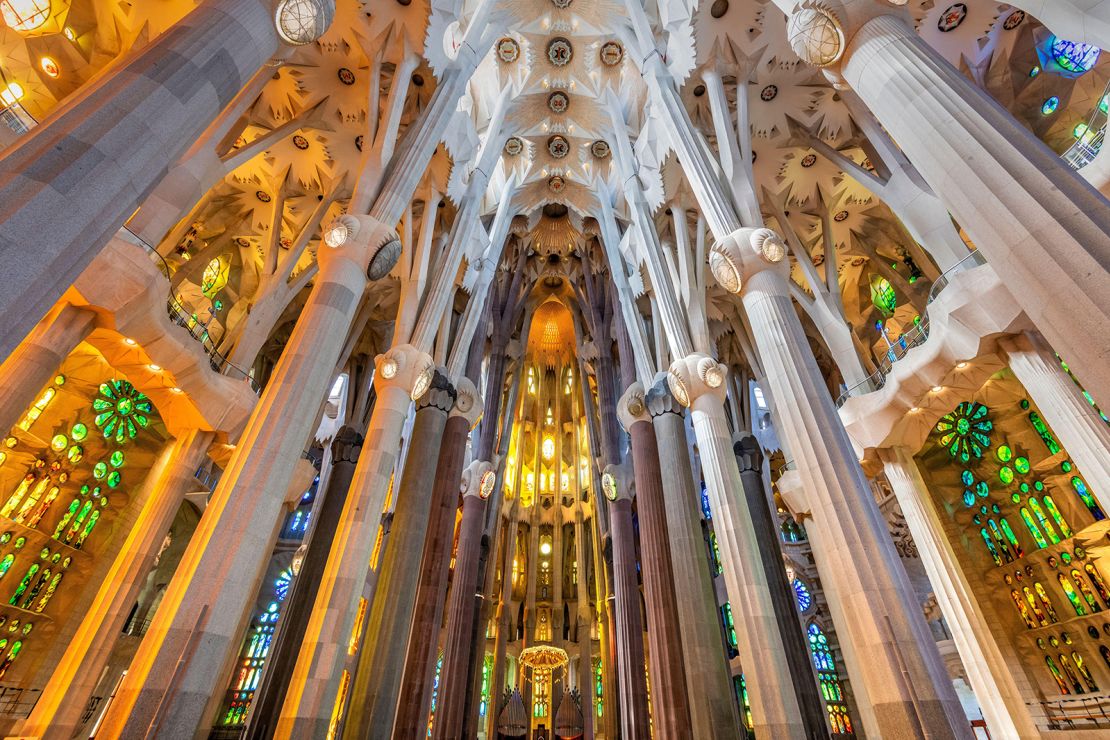
The Sagrada Família, originally inhabiting the misty space between Gaudí’s mind and the real world, continues to operate in multiple realities, only now it is stretched between the physical and digital worlds. In the past two decades the construction team has added even more digital tools to their repertoire, including 3D printers to produce scale models that allow them to better study the designs and test how to construct them, and Lidar laser scanning technologies which allow the builders and architects to digitally scan the parts of the building that have already been built – to both check for accuracy and produce precise digital models that they, in turn, use to design new components of the building.
With little progress having been made over a century of construction, since 2000 the assistance of computers and robotic tools has supercharged the construction process. By 2009 this incredible growth spurt allowed the vaulting over the central nave and apse to be completed – the Sagrada Família finally had an interior. By 2010 there was still much to do including build 10 remaining towers, two sacristies, some ancillary external structures and the cloister enclosing the whole building. By having an actual interior, however, the Basilica could now officially be used for Catholic mass. On Sunday November 7th, 2010, Pope Benedict XVI visited the church. It is with what can only be described as holy irony that the project, founded by the Josephites 138 years prior, would finally be consecrated by Pope whose first name was Joseph.
With such fantastic progress, the Sagrada Família construction board ambitiously set a deadline to finish the project by 2026, the 100-year anniversary of Gaudí’s death. But of course there were more hurdles to come. Covid-19 has put a wrench in the robotic gears and that deadline will not be met. Fortunately, Gaudí presciently left significant wiggle-room in the schedule when he supposedly once noted: “My client is not in a hurry. God has all the time in the world.”
